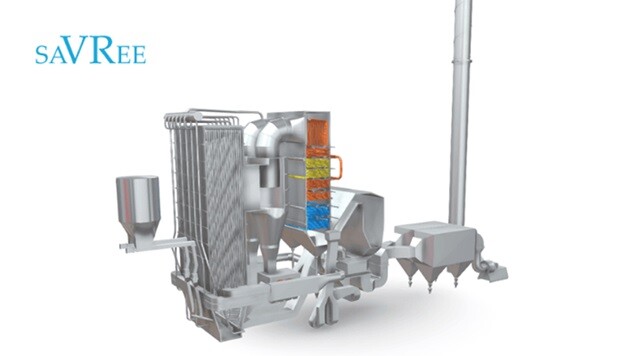[Article]: How E-Learning is Transforming Engineering Training for Power Engineering Professionals
The power engineering industry is developing much faster than ever, and training methods should maintain momentum. Traditional education alone cannot meet demands for renewable integration, digitization, and global energy growth.
E-learning has emerged as a transformative solution that provides flexibility, access, and interaction to those professionals who need to further. Platforms like saVRee are leading this revolution by providing special training, such as online power engineering courses, designed to equip learners with practical knowledge and real-world skills.
Equally for professionals and organizations, embracing e-learning is not just an option-this is a requirement. By taking advantage of modern online training, power engineers can remain competitive, ensure compliance, and can run innovation in an area that strengthens the world.
The Need for Transformation in Power Engineering Training
Power engineering is going through a seismic change due to many global trends:
Ability to adopt renewable: solar, wind, and hydro energy are changing the perception of how the grid operates.
Digital power system solutions: smart grids, automation of services, reliance on data analytics and sensors, require skills that are not common in engineering at this point.
Stability pressure: Strict environmental standards are encouraging companies to improve efficiency and adopt clean energy solutions.
Demand for global workforce: Skilled engineers are required worldwide to meet the growing power needs in developed and emerging markets.
In this environment, professionals can no longer completely rely on what they have learned during their degree programs. Learning for a lifetime is now necessary, and e-learning is providing a practical pathway.
Why Traditional Training Falls Short
For decades, engineering training was based on a person's lectures, static diagrams, and expensive physical equipment. While these approaches provided strong theoretical grounding, they struggled to:
Quickly Customize for New Technologies: Textbooks and traditional courses often lag behind industry development.
Offer Scalability: Training of large teams in global operations is expensive and logically complicated.
To Allocate Real-World Simulation: Safety, cost, and resource limitations; demonstrating that experience in practice can be achieved in labs.
Consequently, practitioners entering the workforce often have a difficult learning curve, and employers have difficulties helping employees catch up to speed.
The Rise of E-Learning in Power Engineering
E-learning is bridging these intervals by distributing flexible, accessible, and interactive training experiences. For power engineering professionals, the benefits are clear:
1. Flexibility and Access
With online platforms, learners can use training anywhere, anytime. It is particularly valuable for professionals balancing the demands of the work program or those who are located far away from the traditional training centers.
2. Scalable Learning Solutions
Organizations can use e-learning to train teams at several places simultaneously without high travel or convenience costs.
3. Interactive Visualization
Video, 3D models, and animation allow engineers to imagine systems such as turbines, generators, and heat exchanges - something that cannot be provided in textbooks.
4. Cost Effectiveness
Online training eliminates expensive physical equipment and travel requirements, making it a more budget -favorable solution for both individuals and corporations.
5. Up-To-Date Material
Digital courses can be updated quickly to reflect new techniques, regulatory standards, or industry practices.
saVRee’s Contribution to E-Learning in Power Engineering
saVRee has established itself as a leader in the field of technical and engineering e-learning. Their courses combine specialist instructions with interactive features designed to improve understanding and retention.
Power Engineering Course is one of the major offerings of saVRee, which is ready to meet the specific requirements of the energy sector. Course cover:
- Power plant systems and processes
- Electrical machines and grid operations
- Energy efficiency and sustainability practices
- Safety protocols and troubleshooting methods
- Integration of renewable energy into traditional grids
Using interactive 3D models and high-quality video lectures, saVRee provides an experience to learners that reflects the operation of the real world-without risks or costs associated with a physical training environment.
Benefits for Professionals and Organizations
The e-learning in power engineering brings tangible benefits for both individuals and organizations:
For professionals:
- Remain competitive with current industry trends.
- Earn certificates promoting career prospects.
- Learn at your own pace, with the ability to see complex subjects as required.
For organizations:
- Train large teams quickly and affordably.
- Make sure your employees comply with and adapt to new safety and environmental standards.
- Empower people to learn while working to minimize downtime.
The Future of E-Learning in Power Engineering
As technology progresses, the future of e-learning promises even more opportunities for power engineering professionals. Major trends include:
Virtual Reality (VR) and Augmented Reality (AR): A new learning environment where learners can operate a virtual power plant or a troubleshooting environment.
Artificial Intelligence (AI): Tailoring learning experience that illustrates the strengths and weaknesses of each student.
Gamification: Training design based on challenges, rewards, and simulations as ways to make training fun.
Global collaboration: Online environments where learning and professionals can work together to address problems and share information across the globe.
saVRee's ongoing innovation keeps it at the leading edge of these future trends and technology, helping professionals develop skills for the present and future.
Conclusion
The power engineering industry is developing much faster than ever, and training methods should maintain momentum. Traditional education alone will not provide the tailored demand for renewable integration, digitization, and worldwide energy expansion.
E-learning can be a game-changing modality that brings improved flexibility, access, and interactions with those professionals pursuing the leading edge of their endeavors. Platforms like saVRee are leading this revolution by providing special training, such as power engineering courses, that are redesigned to equip learners with practical knowledge and real-world skills.
Equally for professionals and organizations, embracing e-learning is not just an option-this is a requirement. By taking advantage of modern online training, power engineers can remain competitive, ensure compliance, and can run innovation in an area that strengthens the world.









































Interested? Submit your enquiry using the form below:
Only available for registered users. Sign In to your account or register here.